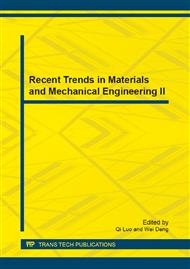p.333
p.339
p.343
p.346
p.355
p.363
p.369
p.375
p.381
Research on Modeling and Control Strategy of Parallel Hybrid Electric Back-Loading Compression Sanitation Vehicle
Abstract:
Establish simulation models of the conventional and parallel hybrid electric back-loading compression sanitation vehicle by AVL CRUISE and MATLAB/Simulink software. Study on control strategy of parallel hybrid electric vehicle based on the work characteristics of back-loading compression sanitation. Results show that: about 24.5% fuel consumption reduction in hybrid modeling compared to the conventional sanitation vehicle under heavy commercial vehicle standard test cycle (C-WTVC, Adapted World Transient Vehicle Cycle), and battery SOC was little changed at 50%. About 32% fuel consumption reduction in hybrid compared to the conventional vehicle under the actual road testing spectrum, and SOC increased about 21.6% relative to the initial state. It controls the engine to work in more stable operation region and reduces engine idle time, but increases engine start-stop times. It also could provide some references for specific engine development of parallel hybrid electric vehicle
Info:
Periodical:
Pages:
355-362
Citation:
Online since:
September 2013
Authors:
Price:
Сopyright:
© 2013 Trans Tech Publications Ltd. All Rights Reserved
Share:
Citation:


